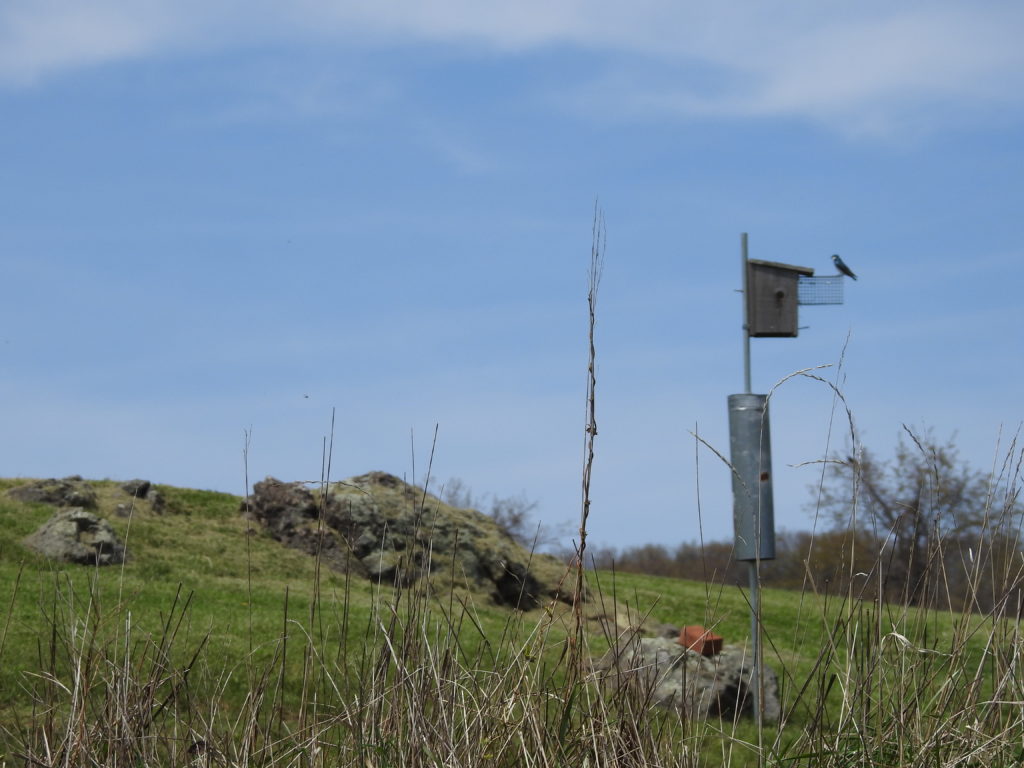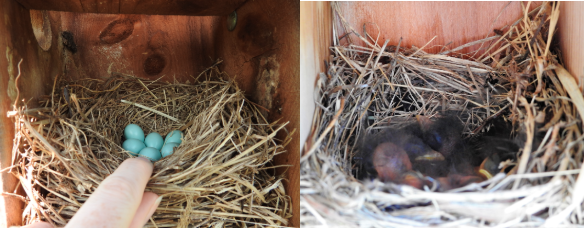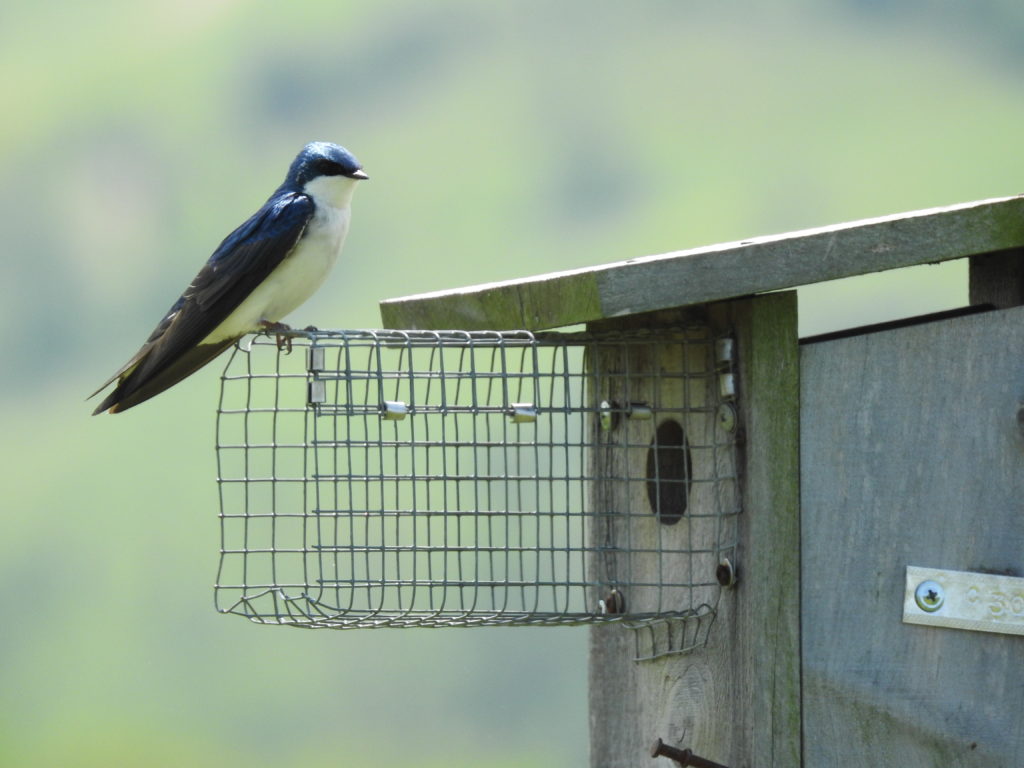
Monitoring: Eastern Bluebird And Purple Martin Next Success
With a fondness for birds and a keen interest in behavioral ecology, Smithsonian Scientist Eugene Morton set up the first string of nest boxes at SCBI back in the late 1970’s. He was initially drawn to study the mating behavior of Eastern bluebirds (Sialia sialis), but later became enamored with another cavity nester, the purple martin (Progne subis), and added gourd-style housing for them in the mid 1980’s. After Dr. Morton discontinued his research at SCBI, however, maintenance and monitoring of the bluebird trail and the purple martin colony fell somewhat to the wayside. Nevertheless, SCBI maintained its commitment to safeguarding the bluebird trail and martin colony to this day. In recent years, they are maintained by variety of volunteers supervised by the animal care team.
Today, it is more important than ever to study the Eastern bluebird and purple martin, and to monitor their populations through time.

Many songbirds, and especially aerial insectivores, are declining or are vulnerable to decline. Bluebird populations, for example, once shrank due to the routine removal of standing dead trees or wooden fence posts, which eliminated important nesting habitat for them. Their populations have since rebounded, largely due to efforts to establish nest boxes across the landscape. Meanwhile, purple martins have a long history with humans, and now almost entirely depend on man-made nesting sites to reproduce. Yet, while populations of these species are large and secure, there is still much we can learn from them.

Over the past 40 years, bluebirds have become a model species for researchers to ask fundamental questions about ecology, evolution, behavior, as well as diseases and health, life history, morphology, and feather coloration. Additionally, purple martins were the subject of truly groundbreaking research into bird migration, when Dr. Bridget Stutchbury tracked the first songbird migration by attaching tiny geolocators to their backs. SCBI’s bird bander, Nanette Mickle, continues to work with Dr. Stutchbury to study migration, although SCBI does not currently apply geolocators to any new birds.
Currently, Dr. Morton’s initial string of boxes has grown to a long winding trail of over 80 nest boxes placed throughout the campus. These nest boxes support many cavity-nesting species like the tree swallow, Carolina chickadee, tufted titmouse, and house wren, in addition to Eastern bluebirds. Every year, all nest boxes are monitored during the summer breeding season and data is submitted to the Virginia Bluebird Society and North American Bluebird Society.
